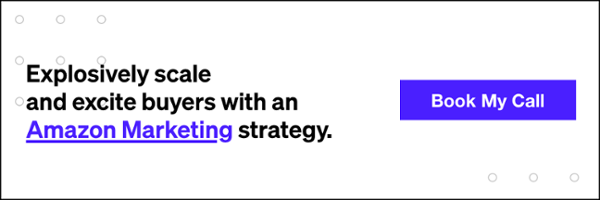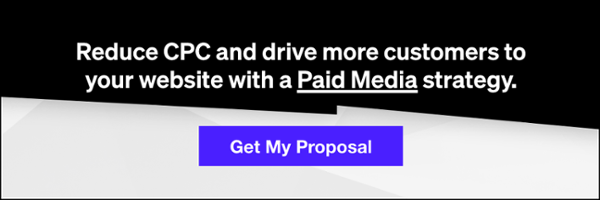Last month, Amazon made headlines with what started out as a rumor. Word on the street was that the online retailer was going to partner up with an iconic footwear and sports apparel brand. Turns out, the rumor was true: Nike has plans to open up their very own Amazon shop.
So, if opening an Amazon shop is good enough for Nike, does that mean it’s good enough for your business too?The answer might not be that straightforward, but there are ways to determine if selling on Amazon is right for your business.
First, it’s important to note that eight in ten Americans are now shopping online, and 43% of the people who shop online do so more than once per month. In our digital world, many businesses are choosing e-commerce as the platform to sell their products.
Related: Your A-Z Guide on Running a Successful E-Commerce Business
With that said, it is extremely important to choose the right platform. And while Amazon is a well-respected marketplace that seems to be increasing in popularity by the minute, what is it that makes it so popular? Let’s take a look.
The Story Behind Amazon
Amazon has grown leaps and bounds since its creation in 1995. The website gained popularity as a destination for shoppers to purchase books, CDs, videos, hardware and software. Soon after its launch, Amazon became one of the most popular sites on the Internet after being featured on multiple “best new website” lists.
The online bookseller even managed to hold its own among competitors like Barnes and Noble and other large bookstores. Amazon had a large database of over one million titles, at prices that were better than brick-and-mortar retailers with discounts of between 10% and 30%. This helped the company grow quickly and gain favor with consumers.
Then, in 1996, the associate program launched. This allowed users with their own website to place Amazon advertisements and earn a commission off of the products sold through their link. One year later, the company went public. Amazon became the first Internet retailer to serve one million customers. From there, they began to expand into other markets around the world and make more products available for purchase.
After finally reaching their first quarter of net profit in 2001, Amazon really took off. As more money rolled in, they were able to acquire companies such as CD Now, Audible, Zappos, and more. Amazon also managed to stay close to its roots by offering a great selection of books and media, but also expanding to just about every other department you can think of.
Related: Tactics to Grow Lifetime Value of an E-Commerce Customer
Today, there are more than 300 million active accounts on the website and more than 400 million total products in Amazon’s catalog. Amazon continues to dominate as not only the most successful e-commerce site, but the eighth largest retailer in the world. As the company continues to expand at an aggressive pace, Amazon’s market share is only expected to increase. Most major brands, from designer labels to everyday basics, now have a presence on the platform.
The Process Of Selling On Amazon
If you’re considering selling on Amazon, it helps to see how the whole process works in action before debating the pros and cons. So, let’s take a quick walk through the Amazon Seller process to give you an idea of the scope and implications of this consideration.
Estimate Sales Volume
Believe it or not, this is the first step you should take before looking at anything else. The amount of sales that you anticipate will be a major factor in determining what kind of Amazon Seller account will work best for your business.
Create a Seller Account
Now, it’s time to start getting set up on Amazon. You will have two options: The individual plan and the business plan. The business plan offers unlimited sales for a flat fee of $39.99 per month. The individual plan comes with a fee of .99 cents per sale. If you expect to sell more than 40 products each month, it is best to go with the business plan.
Select a Category
This is a fairly straightforward step, but it’s one you’ll want to thoroughly think through. Each category has a specific set of its own guidelines and regulations you have to follow. Keep in mind that there are 20 categories on Amazon open for anyone to sell in, but some categories require approval.
Related: Social Media Marketing Strategies for Lead Generation & E-Commerce
Only sellers using the Professional Selling Plan can apply for approval. Make sure you’ll be able to meet all of the requirements before selecting a category. There may be multiple departments your product could fall into.
Get the Details
Next, collect all of the details that customers need to know about your product. This is the time to gather your product photos and compile information like dimensions, colors, features, and anything else you think your customers should know. Be as thorough as possible here. Customers who feel informed are not just more likely to purchase your product, they are also more likely to be satisfied with the product once they receive it (and satisfaction levels impact reviews).
Decide on a Shipping Service
Choose a carrier that makes the most sense for you. Major carriers such as USPS, UPS, and FedEx, will all lay out their services and fees on their respective websites. If you go this route, you’ll likely want to choose the carrier that offers the cheapest rates to increase profit. Alternatively, you can opt to use Fulfillment By Amazon and allow Amazon’s fulfillment centers take care of that process. Just note that using this service comes with a fee and it varies based on the item being sold.
Set Your Price
If you’re already selling your products online, you can choose to use the same pricing for selling on Amazon. However, it is recommended that you do some product research and see what similar products are going for. You may also choose to use Amazon’s auto-pricing. This feature will adjust the price of your product based on the changes other sellers make.
Advantages To Selling On Amazon
A Large Reach
Amazon has a large presence in countries all over the world. According to Business Insider, the online retailer is making headway in terms of global growth and expansion. India, specifically, seems to be one of the retailer’s fastest-growing markets.
Credibility
According to a recent study from Bloom Reach, 55% of online shoppers search Amazon first when looking for any given product. Not only does this platform provide all the specs for a product, but it’s usually at the most competitive price and provides customers with tons of reviews and feedback to consider.
Related: 4 Key Email Sequences Your E-Commerce Company Needs
Businesses who sell in this marketplace get the opportunity to capitalize on the trust that Amazon has already built with existing customers.
Fulfillment by Amazon
You don’t have to use Amazon’s FBA service, but it is a great option. When using Fulfillment by Amazon, you do not need to handle shipping orders to your customers—they handle everything. Using FBA can also allow your items to be Prime eligible. This free shipping perk is very attractive to Prime’s estimated 65 million users worldwide.
But There Are A Few Drawbacks
Competition
When you start selling products on Amazon, you enter a marketplace with potentially thousands of others trying to reach the same goal. There are many sellers who buy in bulk, slash prices or use other tactics that can make it difficult for you and your company to stand out.
Fees
In addition to the .99 cent per sale or $39.99 per month fees, there are other fees to worry about. One of those fees is the referral fee. This fee can range from 6% to 45% depending on the category of your product.
Related: Why Is E-Commerce So Important?
The final fee to factor in is the variable closing fee. This fee applies to media items and comes out to $1.80 per item sold. You can find a full breakdown of Amazon’s seller fees here.
Limited Communication
When you sell a product on Amazon, you only have one way to communicate with your customers directly. You must use the buyer-seller messaging service provided by Amazon. Any attempt to communicate with your customers through email, phone, or other means is against the terms of service for seller accounts. This also means you are unable to promote new products to customers that purchase through Amazon.
Wrapping Up
There are a lot of great reasons to sell on Amazon, but the platform does not come without its challenges. Ultimately, the answer depends on how well you are able to work through the cons of using the marketplace.
Amazon’s fees add up fast, and you have to be prepared to factor that in when determining your prices. You also need to look at how much competition there is for products similar to yours. Your best bet is to outline a strategy to make your listing stand out, since direct communication with customers is limited.
If you are capable of combating these issues without eating up too much of your profit, Amazon is a viable option for your business.



















